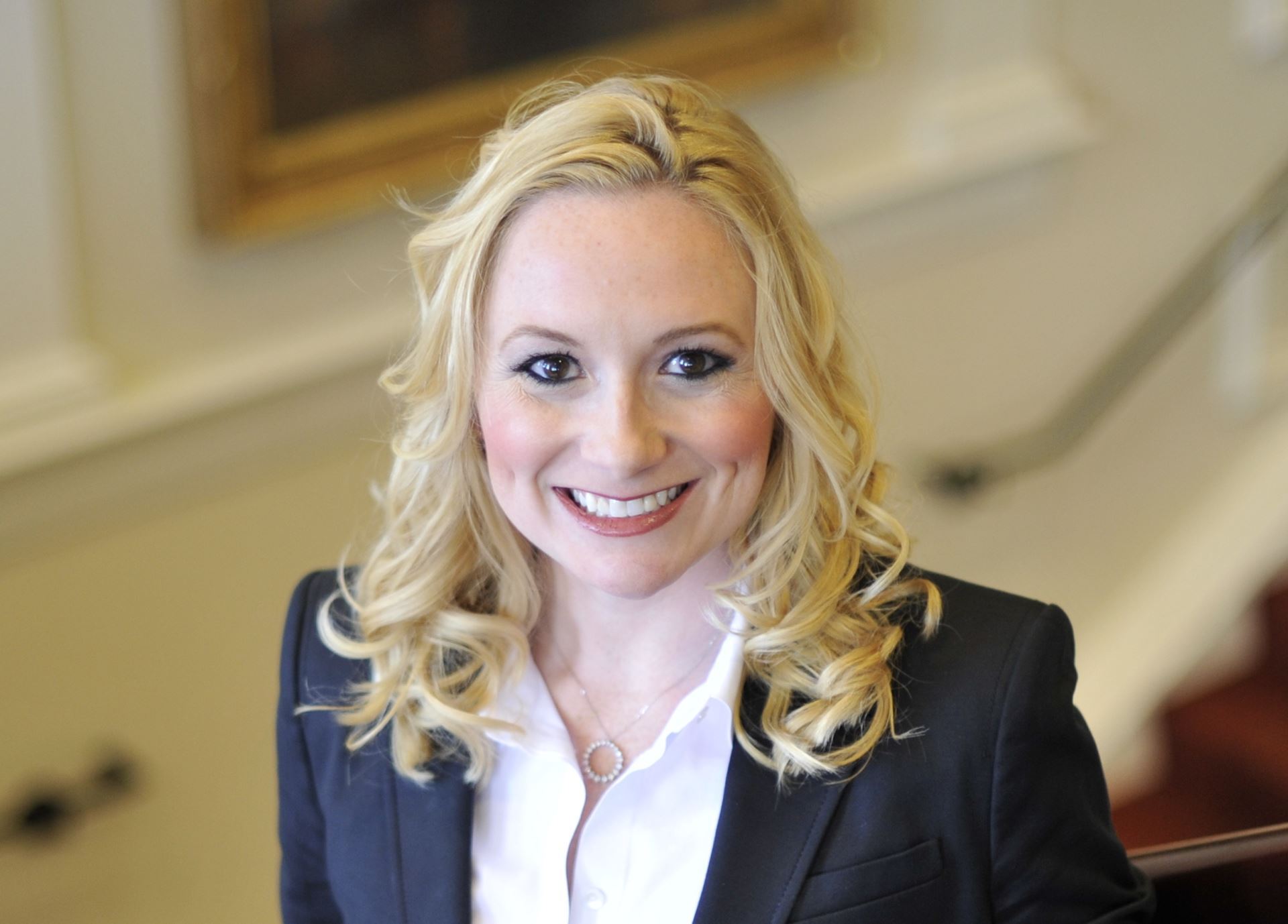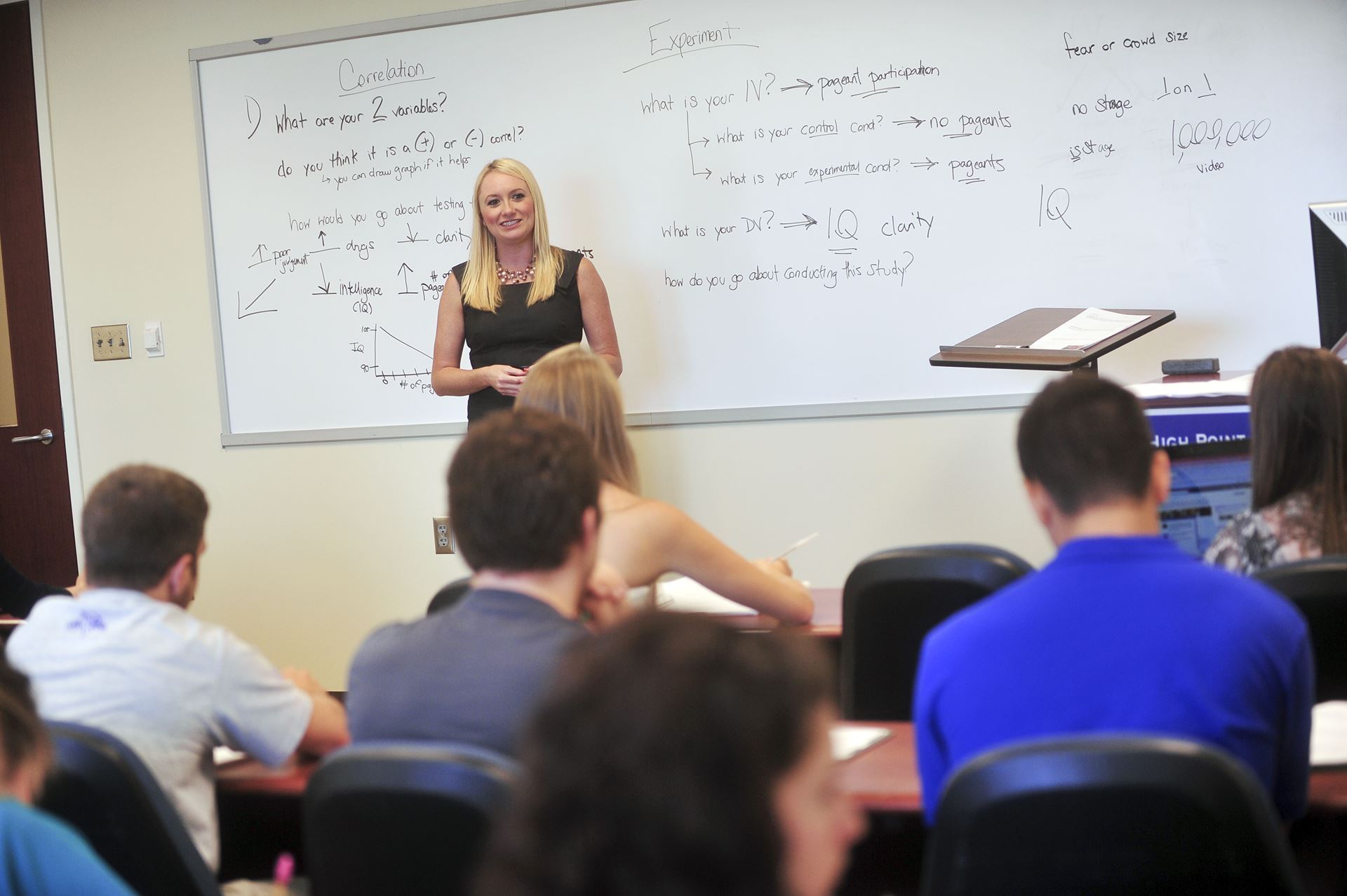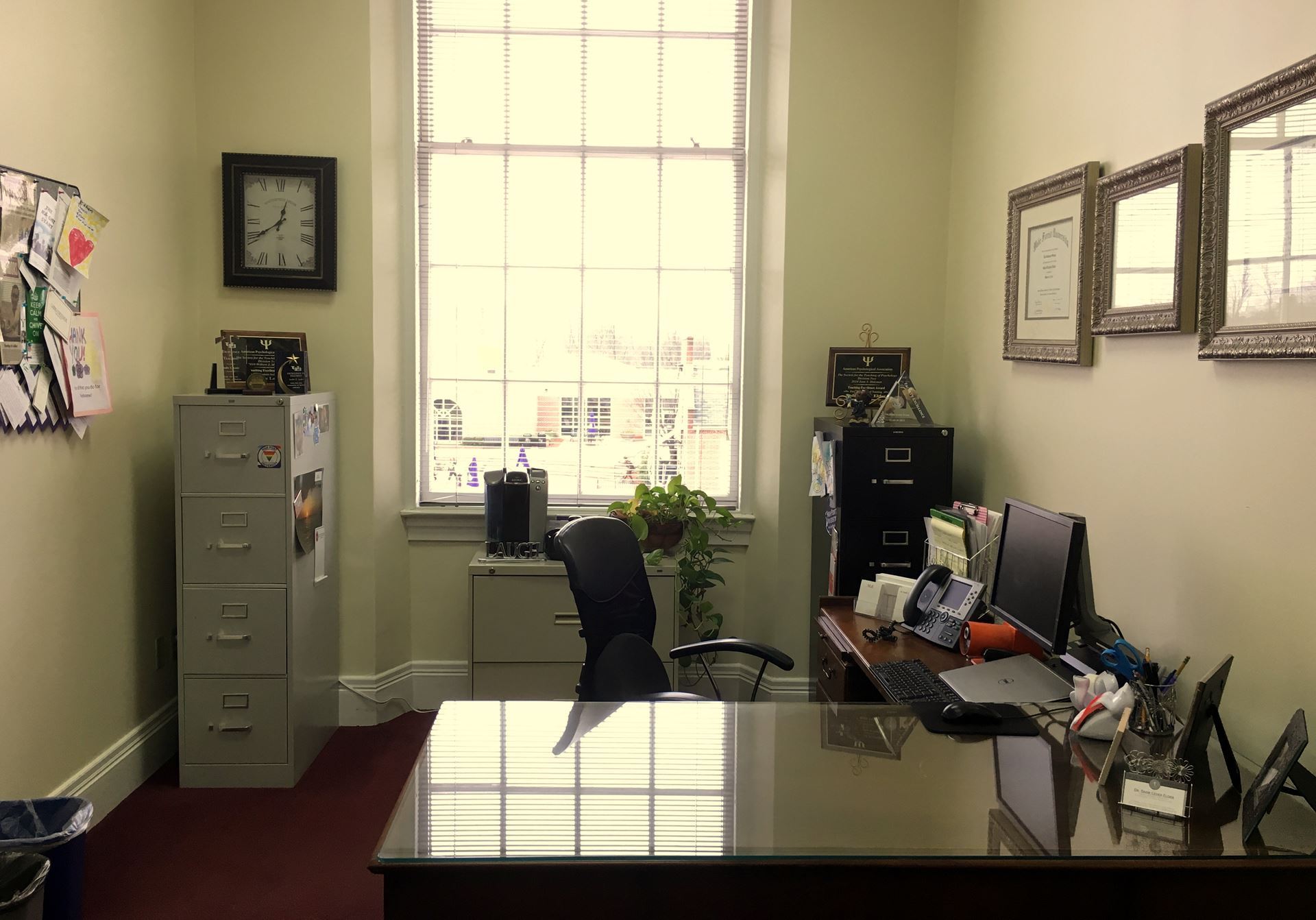 School name: High Point University
School name: High Point University
Type of school: Private Liberal Arts University (with approximately 4000 undergraduates)
School locale: High Point, NC (medium-sized city with a small town feel)
Classes you teach: Introduction to Psychology, Close Relationships (online and in-person), Personality Psychology, Research Methods, Social Influence, Social Psychology (including a Service-Learning section), Survey Research, and a First Year Seminar called Love and Hate in Cyberspace
Average class size: 30 students
What’s the best advice about teaching you’ve ever received?
I have received a number of helpful suggestions throughout my teaching career, and similar to many of the other educators featured in this blog the best advice was, “Be yourself.” If I were giving advice to an up-and-coming teacher, I would build from that to say, “Don’t be afraid to be creative!” To me, teaching is a form of art, and you cannot be afraid to express yourself. I often try novel (and sometimes odd) ways of helping my students make a connection to the material. Although it can be intimidating or even embarrassing to put yourself out there by creating something innovative, it’s often those activities and assignments that are the most well-received and effective.
 What book or article has shaped your work as a psychology teacher?
What book or article has shaped your work as a psychology teacher?
Perhaps the most influential book in shaping my teaching career is McKeachie’s Teaching Tips. It’s an oldie, but a goodie, and it came to me at a time when I was a fledging teaching assistant, eager to better myself as an educator. Since that time, I’ve become a voracious consumer of teaching-related books and articles. Although there are too many resources to name, I am inspired by and credit a number of my current teaching strategies to my ECP colleagues. For instance, I learned a great deal collaborating on both So You Landed a Job – What’s Next? Advice for Early Career Psychologists from Early Career Psychologists and Introductory Psychology Teaching Primer: A Guide for New Teachers of Psych 101, Second Edition. If you haven’t read them, I encourage you to check them out!
Briefly tell us about your favorite lecture topic or course to teach.
My research background is in the psychological study of close relationships, so most of my favorite lectures involve sharing my knowledge about romantic relationships with my students. Where appropriate, I work relationship material into almost all of my courses. And thankfully, given my students preoccupation with their own relationships, this helps to make the material relatable. Building from that, I’d say my favorite class to teach is Close Relationships, as it bridges my two loves, teaching and relationship science. I think my passion is contagious, as by the end of the semester class tends to feel like a conversation between myself and my students. I actually love teaching this topic so much that for the past five years, I’ve shared a number of my class examples with a national audience as a writer for the Science of Relationships website. This forum allows me to “teach” close relationship material outside of the classroom by providing empirically-sound relationship advice in the form of pop-culture narratives. As educators, I think we all hope to make a difference in our students’ lives. With this material, perhaps more than others, I can actually see that happening through the demonstration of healthy relationship choices. Here’s hoping that in some small way, I’ve helped to fend off divorce and facilitate their lifelong relationship success.
Briefly describe a favorite assignment or in-class activity.
I have my students online date! In my Love and Hate in Cyberspace class, when covering attraction and online dating, I have my students generate online dating profiles for various dating websites and together we navigate them just like a dater would. In this activity, students are asked to identify examples of successful profiles and compare them to unsuccessful (or outright bad) profiles. They must then support their claims with course material. Students often draw from lessons on evolutionary theories of attraction (including gender differences and the role of physical appearance in partner selection), particularly when using a website like Match.com, where both pictures and bios are available. I then ask students to repeat the assignment on a website like eHarmony.com, where daters are provided with “matched” partners. In this case, students have fewer potential partners to evaluate and are not provided with a picture. Interestingly, this leads to a discussion about how physical attractiveness acts as a gate-keeping mechanism and the importance of other partner selection strategies, including the role of similarity. Finally, we conclude with a discussion comparing partner selection online vs. in-person. Initially, my students approach this activity with a mix of intrigue and trepidation. But after we complete it, they are not only wiser about this growing relationship phenomenon, but excited to share their experiences with others. My only caution to other professors who may want to try this activity would be to have a strict set of guidelines. I take numerous precautions to ensure my students anonymity during the process. I also work to show respect for their current relationships, as well as for the people on the websites who are legitimately seeking a connection.
What teaching and learning techniques work best for you?
I have a number of “go to” strategies in my teaching toolbox. The best strategy often depends on the class and the objective of a given lesson, but these are some of my tried and true techniques:
- Get to know your students – I invite my students (often with extra credit) to office hours for a five-minute chat. I ask them about silly things just to break the ice and create a more informal connection. It tends to make for a more talkative classroom, where students ask additional questions and participate in discussions of course material.
- Storytelling – If I can keep myself from getting too tangential, I’ve found that stories from my own life are extremely effective in helping students make connections to course material. I’m surprised how often my students use examples from my life to explain their understanding of a concept.
- Reflection – I started using weekly reflections when teaching a Service-Learning section of Social Psychology. It worked very well for getting my students to go beyond simply memorizing material from the textbook. Now I use them in a number of classes. Students are asked to “think out loud” and I encourage (and reward) any novel thoughts they share about the topic we are learning.
- Incorporation of service – I teach a lot of Introduction to Psychology sections, and in an effort to make the class come to life, I have incorporated a Helping Behavior Activity when covering the Social Psychology chapter. I set aside a class period and students select the particular pro-social activity. In the past, students have written Thank You cards to US troops and veterans, created fleece blankets for Project Linus, sent care-packages to victims of Hurricane Sandy, donated holiday gifts through the Salvation Army’s Angel Tree Program, constructed coloring books for the Children’s Miracle Network, and collected school supplies for a local Title I elementary school. All in all, it is a very rewarding experience and one that pays dividends in student learning (of the course material and as an added bonus their self-reported volunteerism and social responsibility).

Three words that best describe your teaching style.
Personal, Encouraging, and Rigorous
(Curiosity got the best of me, and I bravely took a look at my RateMyProfessor feedback. Thankfully, students seems to agree with this description of my teaching style!)
What is your teaching philosophy in 8 words or fewer?
This was a tough question, given my propensity to be verbose, but here’s what I’ve decided on:
Inspire students by helping them connect to material
Tell us about a teaching disaster (or embarrassment) you’ve had and how you dealt with the situation.
I’ve had all of the typical teaching disasters: calling students by the wrong name, being unable to work the technology (including lights) in the high-tech classrooms, spelling errors on the board, and incorrectly scoring an item on a test. But the disaster that stands out the most occurred during the first year of my current job. I was still in the “dress for success” stage of my career, which involved inappropriately high heels for teaching. I was walking to class, not paying attention, and tripped while crossing the road (wildly and very embarrassingly in front of numerous student spectators). I picked myself up (mortified) and went directly to the bathroom to clean the wound as best I could before heading to class. After about twenty minutes of lecturing I stopped to ask students if they had any questions. Three or four hands shot up immediately. They all wanted to know about the road rash on my leg, which by this point had started bleeding. I was genuinely touched by my students’ concern, but I don’t think they learned any material that class. Although I try hard to minimize mistakes, I’ve come to believe that they aren’t nearly as bad as I think they are (spotlight effect) and that they humanize us to our students. However, when disaster does strike, I try to resolve it by reiterating my commitment to getting it (whatever that may be) right the next time and thanking my students for their understanding.
 What’s your workspace like?
What’s your workspace like?
My workspace is deceiving. From one view (the one I’ve chosen to share), it is very professional. From the other, it’s cluttered with papers of varying importance. I also have a workspace at home that most of the time looks like an episode of Hoarders. I have a number of projects going, each with its own stack of background articles, questionnaires, printed results, and some with manuscripts and heart-breaking reviewers’ feedback. I keep thinking that over the breaks I will finally complete a few. Here’s hoping that this summer is the summer it finally happens. On an optimistic note, a very small stack was removed when I was able to turn in this blog!
What is something your students would be surprised to learn about you?
I don’t know if this is a good or bad thing, but I have had a pretty eclectic life. So for this question, I’ve got a lot of random experiences to choose from. Most of my students know that in addition to my psychology degrees I have a Bachelor’s of Science in biology, which is not typical of a psychology professor. What I don’t think they know is that I was captain of the varsity cheerleaders in high school, was on the fencing team at UNC-Chapel Hill, and was in the Miss North Carolina pageant. I told you my life has been full of random adventures. Perhaps what I encounter most frequently is my students’ surprise (or confusion) by my married name being an anagram of my maiden name. Yep, I’m Dr. Sadie Leder Elder, and since I’ve changed my name in the past four years (some students and colleagues call me Dr. Leder, while others call me Dr. Elder), it makes for a great deal of chaos at the university.
What are you currently reading for pleasure?
Please feel free to judge me, but I read textbooks for fun. I am a nerd! I also squeeze in a little light reading in the form of US Weekly and People magazine. I do use a lot of pop culture in my teaching, but I don’t stay current for that reason. I just love it!
What tech tool could you not live without?
I cannot live without my laptop. I know that my iPad and iPhone would likely be capable of tackling any task that arose while on trip, vacation, or even my honeymoon, but I’d prefer not to risk it. When it comes to my laptop, my motto is, “Don’t EVER leave home without it!”
